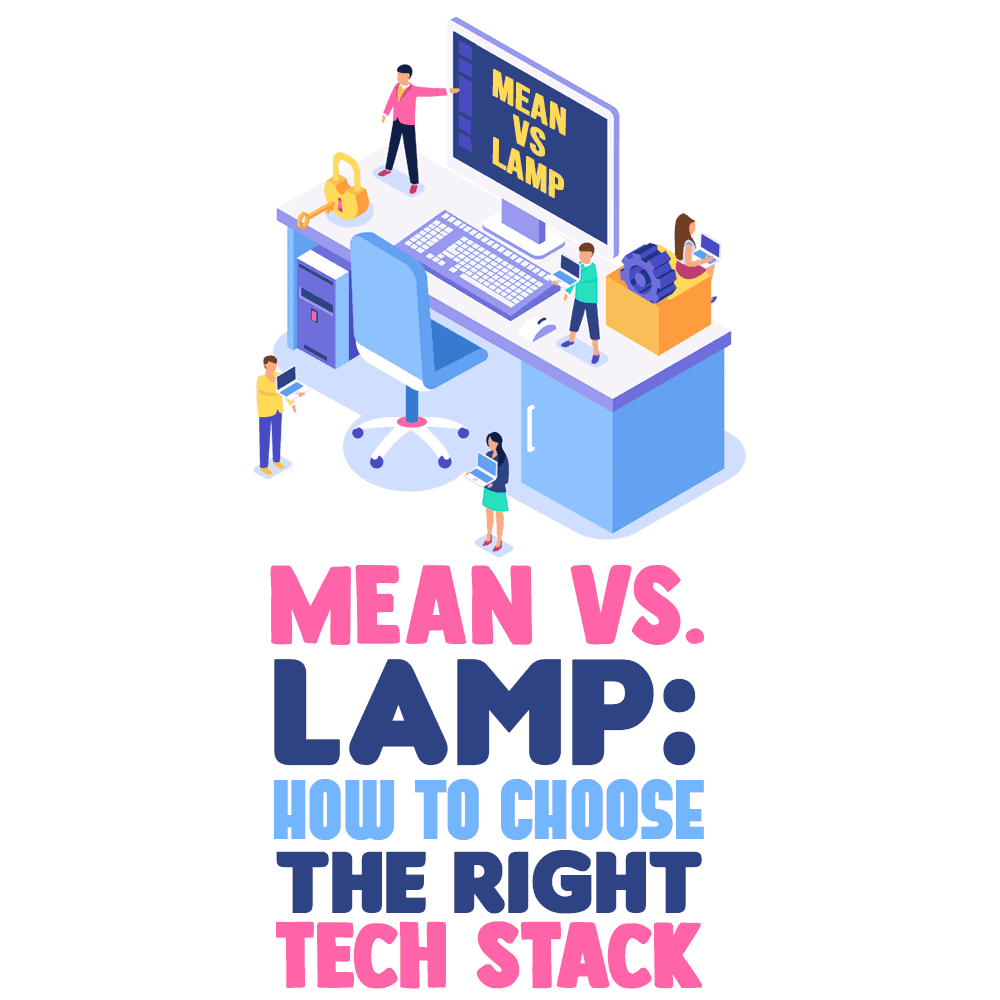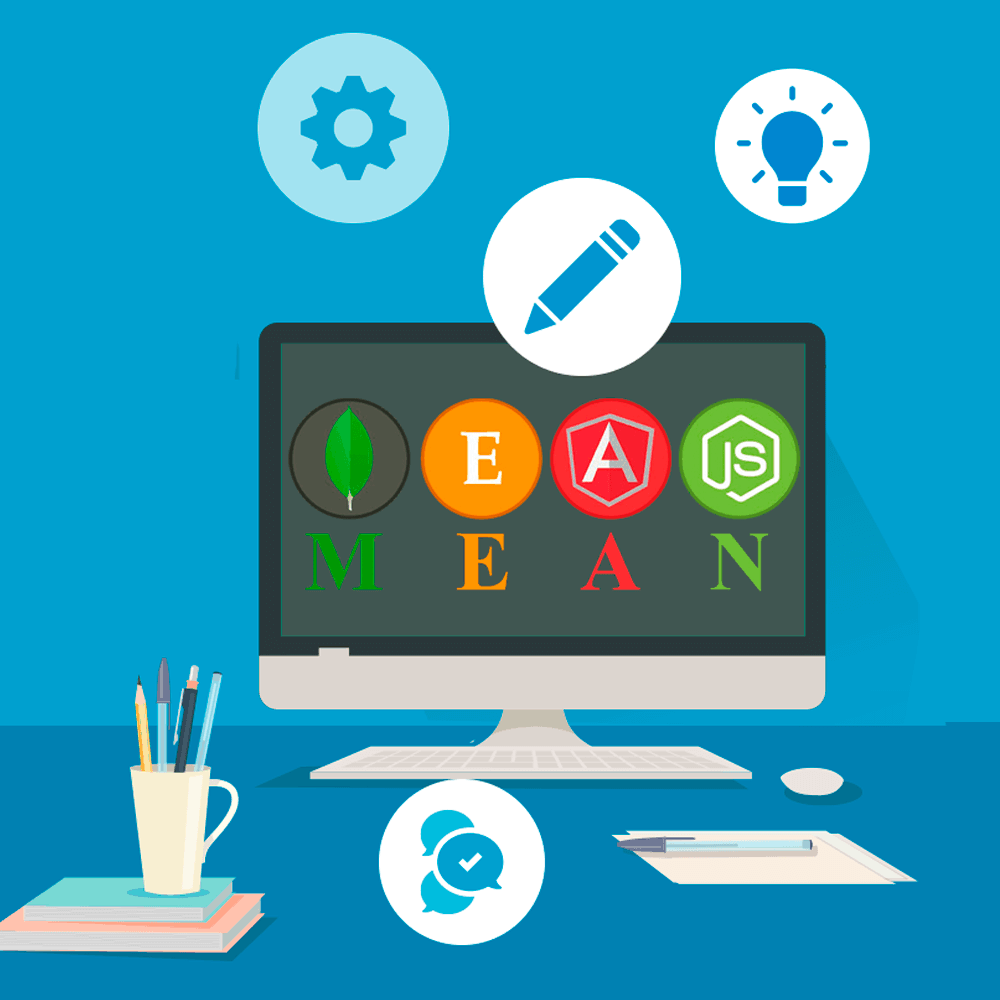
The MEAN vs. LAMP argument on the internet came to my attention recently when I was discussing technology stack with a potential client for their new project.
In my opinion, choosing between the MEAN and LAMP technology stacks comes down to one thing: your business requirements.
If you’re someone who doesn’t know anything about MEAN and LAMP, this article will teach you all the ins and outs of both technology stacks so that you can make the right decision.
Before we get into it, I’d like to highlight the importance of making the right technology stack selection and how the wrong stack can lead your project to failure.
Choosing the wrong stack means that it might become unsustainable in the near future. It also can make finding talent difficult for you. Furthermore, the wrong tech stack can lead to additional technical debt and maintenance costs—not to mention the expenses caused by a new tech stack that might be required in the future.
Conversely, choosing the right tech stack means the performance of your product will be solid. It will be easier to fix bugs and address issues related to performance, meaning the development process will become easier and faster. Ultimately, code maintenance will be easier and cheaper.
So, now that you know the benefits of the right tech stack and drawbacks of the wrong tech stack, let’s discuss in detail how to make the right choice between MEAN and LAMP.
MEAN vs. LAMP: the Basics
MEAN stands for MongoDB, ExpressJS, AngularJS, and NodeJS. When these programs are used together in a stack, the web development process is enhanced.
For example, MongoDB offers more flexibility for storing data, NodeJS is a better nexus to efficiently run your server, AngularJS provides an easy way to add interactive components, and ExpressJS helps to standardize how you develop a website.
Our other contender, LAMP, stands for Linux, Apache, MySQL, and PHP, Perl, or Python.
LAMP offers great customization and flexibility and is cost-effective, some of the reasons that for years it has been the preferred choice for developing enterprise apps.
So Why Has Confusion Between Them Emerged?
Turns out, before MEAN stack, we had only one option: LAMP stack.
But now that MEAN stack seems to be dominating enterprise web development, businesses are highly confused as to which one would be better for their next project.
Now, there is only one way to clear up the confusion: taking a closer look at both of them.
Let’s start with the MEAN stack.
MEAN Stack Pros
MEAN stack’s huge advantage is that it uses JavaScript programming language. For instance, everything can be set up using JavaScript, which makes it easier to find JavaScript developers.
Secondly, MongoDB is also very popular and faster than MySQL, which makes reading a huge amount of requests a piece of cake.
Angular, on the other hand, is developed and maintained by Google, a massive advantage, as Google releases new functions and updates on a consistent basis.
Besides these, another advantage of MEAN stack is that it is capable of building mobile apps along with desktop apps using cross-platform frameworks like Ionic.
Like every other new technology, MEAN stack has certainly created some hype for which developers fell, leading to developers starting to build their projects using MEAN stack. Its simplicity, performance, and flexibility can make the change worth it.
MEAN Stack Cons

MEAN Stack does have a dark side, too, so let’s shed some light on it.
Most frameworks and libraries in MEAN stack are relatively new, and updates are released frequently. This means that maintaining a MEAN stack app becomes quite a hassle for beginners.
It becomes difficult to follow best coding practices and maintain a clean code base as your app grows. Plus, if your app targets Internet Explorer users, then they’re likely to face usability issues.
LAMP Stack Pros
LAMP is like a dinosaur of the web development world, used by hundreds of thousands and maintained very well.
Since it has been on the market for years, there are endless libraries, modules, and add-ons available that can quickly cater to the different needs of your business.
Moreover, since LAMP is Linux-based, there is a huge community that can help you in any situation that might occur while developing your web app. MySQL has also been on the market for a long time, so it is quite reliable as well.
The PHP part of the LAMP stack is also a highly maintained and mature programming language supported by a huge community. In fact, LAMP is a perfect fit if your app involves a lot of server-side tasks.
LAMP Stack Cons
Just like MEAN, LAMP stack does have its disadvantages, and it’s time we address them as well.
Since LAMP is open-source and easy to learn, many developers do not fully follow the standard practices, and as a result, they are building complete garbage apps.
You see, learning PHP is very easy, but mastering it is difficult. And since PHP is neither pre-compiled nor strongly typed, I recommend diving deeper into learning PHP before making the final decision to use LAMP.
The reason? Security!
Since developers don’t follow best practices when using LAMP, there are chances that the end-product might be vulnerable in terms of security.
As for data storage, MySQL might be a mature option, but the NoSQL databases like MongoDB are highly recommended due to their scalability. And since JavaScript has been the No. 1 programming language for the last five years, LAMP developers are also shifting toward learning MEAN Stack.
What’s the Best Fit for Your Project?
Like I mentioned at the beginning, determining the best fit lies in the specific requirements of your business. Since both technology stacks have pros and cons, choosing whether MEAN or LAMP will work best for you largely depends on the type of application you want to build.
On the one hand, MEAN stack development provides the benefits of enhanced performance and flexibility in deployment, and a single programming language that is used across the stack.
LAMP, on the other hand, can be just as fast if optimized well. For instance, PHP’s performance can be optimized by Lightspeed or Nginx but requires a bit of work to configure.
Overall, both technology stacks are reliable players for web application development. The choice, as I mentioned in the beginning, comes down to your business requirements and also web developers you have onboard.
Overall, both technology stacks will continue to play important roles in web development, but the right choice will always come down to the priorities of your business.
